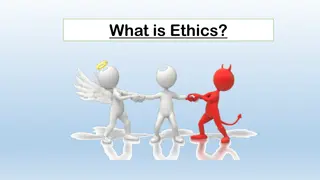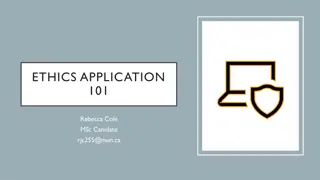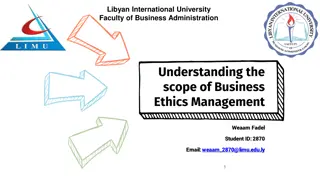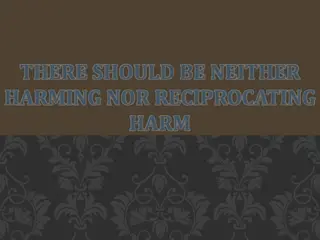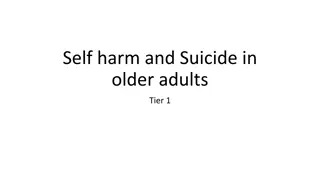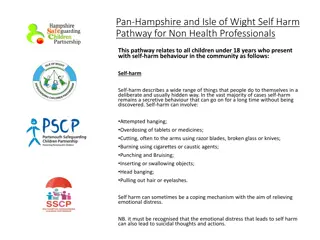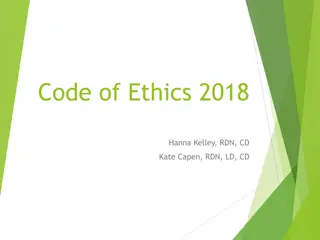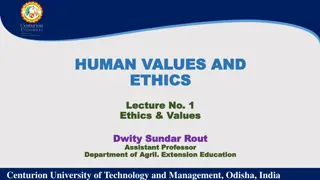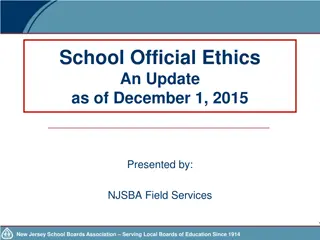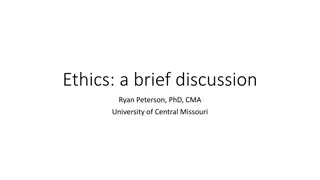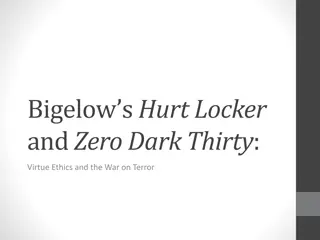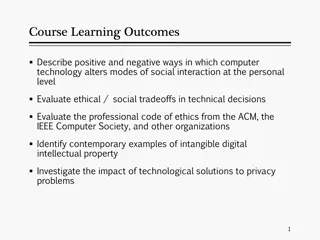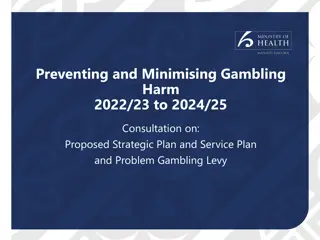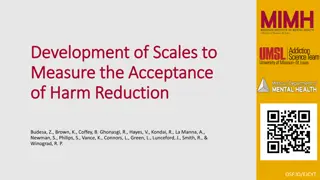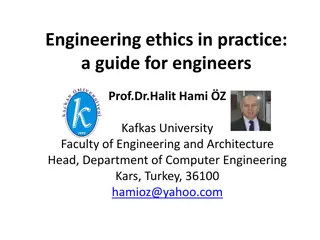Exploring the Ethics of Do No Harm in Research and Practice
Delve into the profound concept of "Do No Harm" as it relates to bioethics, research, and medical practice. Examine the historical origins of this principle, differing perspectives on harm, and the implications of non-maleficence in research settings. Gain a comprehensive understanding of the Nuremberg Code and its significance in shaping modern ethical standards in healthcare.
Download Presentation

Please find below an Image/Link to download the presentation.
The content on the website is provided AS IS for your information and personal use only. It may not be sold, licensed, or shared on other websites without obtaining consent from the author. Download presentation by click this link. If you encounter any issues during the download, it is possible that the publisher has removed the file from their server.
E N D
Presentation Transcript
TEACHING A MODULE UNIT Powerpoint Draft Template
LIST OF TOPICS COVERED The concept of Do No Harm History of the bioethical concept Differing ideas about harm Rethinking notions of harm when dealing with ancestral remains
LEARNING GOALS Become knowledgeable about the origins of the bioethical concept of do no harm Recognize the potential for harm in research Recognize cross-cultural differences in what constitutes harm Identify the unexpected possibilities of harm in a research project
NON MALEFICENCE (DO NO HARM) Non Maleficence We should act in ways that do not cause harm to others We should not cause avoidable or intentional harm We should avoid even the risk of harm Maleficence can happen with or without intention You do not have to intend harm to violate this principle You do not even have to cause harm. If you have knowingly or unknowingly subjected a patient or colleague to unnecessary risk, you have violated this principle (Munson, 2004).
DO NO HARM Primum Non Nocere First Do No Harm First mention within the Hippocratic Oath which was an ethical guideline in Ancient Greek society States, To abstain from doing harm Included in modern medical training beginning in the middle of 19thCentury Given existing circumstances it may be better to do nothing at all than risk more harm to the patient. Asks for researchers and practitioners to consider the benefits versus the risk of harm. If something has no benefits then it should not be done.
MODERN HISTORY OF DO NO HARM Nuremburg Code Created in 1949 as the result of information revealed during the trials of Nazi war criminals in the Nuremberg Trials. The trials revealed that Nazi physicians had conducted medical experiments on prisoners of war, Jewish captives and people deemed undesirable by the Third Reich, such as mentally disabled persons. Additional information about war crimes such as those perpetrated by the Japanese on Chinese prisoners of war was also influential in the creation of the code. The code largely went ignored by medicine and researchers until the 1960s when it was used as the basis for other ethical guidances.
TEN PRINCIPLES OF NUREMBERG 1. Required is the voluntary, well-informed, understanding consent of the human subject in a full legal capacity. 2. The experiment should aim at positive results for society that cannot be procured in some other way. 3. It should be based on previous knowledge (e.g., an expectation derived from animal experiments) that justifies the experiment. 4. The experiment should be set up in a way that avoids unnecessary physical and mental suffering and injuries. 5. It should not be conducted when there is any reason to believe that it implies a risk of death or disabling injury. 6. The risks of the experiment should be in proportion to (that is, not exceed) the expected humanitarian benefits. 7. Preparations and facilities must be provided that adequately protect the subjects against the experiment s risks. 8. The staff who conduct or take part in the experiment must be fully trained and scientifically qualified. 9. The human subjects must be free to immediately quit the experiment at any point when they feel physically or mentally unable to go on. 10. Likewise, the medical staff must stop the experiment at any point when they observe that continuation would be dangerous.
BELMONT REPORT Guidance created in 1979 by a national commission. Prompted by the Tuskegee Syphilis Study (1932 1972) African American men living in Alabama were enrolled in a study on the progression of syphilis. The largely illiterate and impoverished study group of 600 men were not offered penicillin (the most effective treatment). Individuals who contracted syphilis during the study were not told that they had the disease. Provides a unifying ethical guidline used for research and health care delivery.
BELMONT PRINCIPLES Respect for persons: protecting the autonomy of all people and treating them with courtesy and respect and allowing for informed consent. Researchers must be truthful and conduct no deception; Beneficence: The philosophy of "Do no harm" while maximizing benefits for the research project and minimizing risks to the research subjects; and Justice: ensuring reasonable, non-exploitative, and well-considered procedures are administered fairly the fair distribution of costs and benefits to potential research participants and equally.
HARM CROSS-CULTURALLY Just a few examples: Some societies regard animals, plants, and land formations to be relatives Within Native communities a clan s totem will often be an animal and being disrespectful to that animal or eating that animal may cause metaphysical harm to a person or community. Gossiping in conservative Native communities is considered harmful to the basic social fabric as it disrupts relationships between persons and the cosmic order. Attempting to lead without the proper authority designation within a some Native communities or without consensus is considered harmful and disruptive to the social and cosmic order. Touching or interacting with powerful spiritual objects or entities beyond your status in the ceremonial order can cause harm to you and your people.
GUIDANCES CROSS-CULTURALLY The guidancesabove give us a great deal for understanding working with Natives: 1. Autonomy -Respect for the autonomy of individuals. Ancestors are individuals. Ancient DNA and DNA from living persons come from individuals. Informed consent is required for autonomous decision making. 2. Beneficence Maximizing Benefits and Reducing Risk Ask: Why is research with Ancestors or Native DNA necessary? Ask: How will this benefit the community? Ask: Will the data collection be respectful within community values? Ask: Will my results undermine community political and social status?
3. Justice Non-Expoitative Power within project shared with community Benefits to community Equal distribution of project resources within community
RESEARCH HARM & ETHICS TIMELINE https://www.niehs.nih.gov/research/resources/bioethics/timeline/
REMINDER If including pictures, please save the credits or the original link for any picture in a separate word document for Teresa If including pictures, please save the credits or the original link for any picture in a separate word document for Teresa
REFERENCES & ACKNOWLEDGMENTS National Science Foundation grants 1449465, 1540447 Munson, R. (2004). Intervention and reflection: Basic issues in medical ethics (7th ed). Belmont, CA: Wadsworth.




